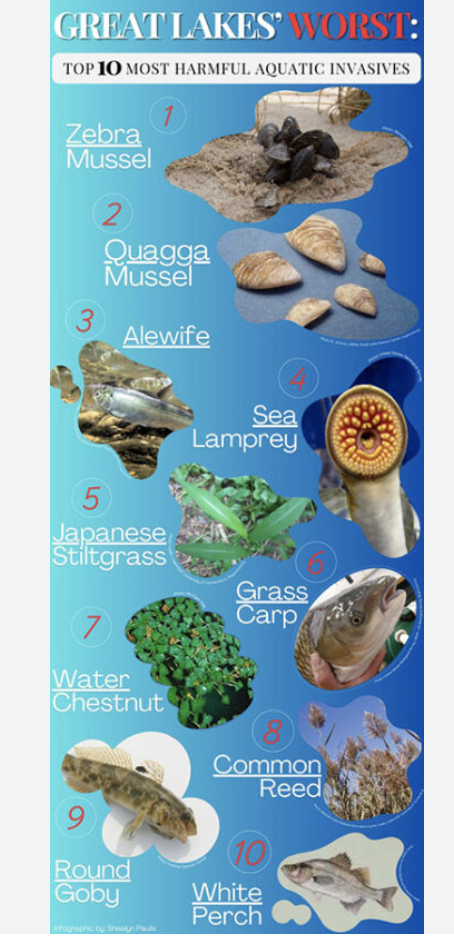
What’s the Fishing Issue?
A Battle Beneath the Waters: The Struggle Against Aquatic Invasive Species in
By Rex Alirigia
Many waterbodies may look peaceful on the surface, but beneath the waves, an all-out invasion is underway. Tiny but mighty intruders like zebra mussels, carp, and sea lampreys are muscling in, wreaking havoc on ecosystems, and giving resource managers, scientists, and policymakers a collective headache. Bernos et al. (2022) dive into this underwater turf war, exploring the ongoing struggle to outsmart and control the growing population of these unwelcome guests before they turn our freshwater systems into their personal stronghold.
For centuries, many waterbodies have been a thriving hub of biodiversity, economic activity, and cultural significance. But beneath their shimmering surface, an ecological battle rages. Invasive species, uninvited guests like zebra mussels and round gobies, have stealthily infiltrated these waters, spreading rapidly through shipping routes, fishing activities, and shifting climate conditions. These invaders outcompete native species, disrupt food webs, and inflict costly infrastructure damage, leaving resource managers, scientists, and policymakers scrambling for solutions. Efforts to control these species have leaned heavily on chemical treatments and physical removal methods. While these approaches have had some success, they often come with unintended consequences, harming non-target species, requiring continuous intervention, and offering only temporary relief. With each passing year, the urgency to find a more sustainable and effective solution grows. Promising new frontiers in managing AIS are emerging. New technologies in synthetic biology are proposed to manage the growing population of invasive species. By introducing genetically modified organisms designed to control or overpower invasive populations, researchers hope to provide a targeted and long-term solution to the crisis. However, with innovation comes uncertainty. These technologies, while powerful, raise concerns about their effectiveness in real-world conditions, potential ecological effects, and the difficulties of navigating the regulation and social systems in which they intend to be used. Many waterbodies are bordered and governed by multiple jurisdictions with different social and political ideologies. Implementing such innovations in this type of region requires more than establishing the effectiveness of the technology to eradicate invasive species.
As such, the battle against aquatic invasive species in many regions is not just an ecological, economic, or scientific challenge, It is a battle of all challenges. Bernos and his colleagues surveyed people (experts) responsible for eradicating aquatic invasive to understand the importance and appropriateness of using these new technologies to control the population of species. They figured out that it’s not just a battle for control or power, it’s a test of policy, collaboration, urgency, and preference of technologies with fewer future impacts or unintended problems. As researchers delve into the effectiveness of various interventions, a troubling reality emerges: while some strategies show promise, important spaces in policy direction and implementation continue to hinder progress.
They observed that as resource managers struggle to contain the spread of invasive fish, uneven policies and inconsistent funding create significant obstacles to implementing new control methods. additionally, scientists need sustained funding and cross-border collaboration to continue developing these innovative strategies to reach their full potential and use. With the stakes high and time running out, a critical question remains: Can regulatory frameworks and scientific advancements align quickly enough to prevent irreversible damage?
They further shed light on this urgent issue by emphasizing that while progress has been made, no single solution is sufficient. The study highlights the necessity of using multiple approaches, integrating scientific research, flexible regulation, and active community engagement. The authors conclude that their findings serve as both a warning and a guide, urging stakeholders to move beyond short-term toward long-term solutions and coordinated action. The battle is far from over, but with informed strategies and collective action, there is hope for restoring balance in waterbodies.
Leave a Reply